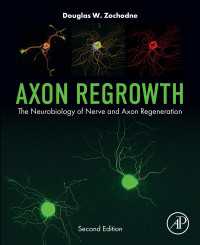Description
This book comprehensively describes biological phenomena, adaptation mechanisms, and strategies of living organisms to survive under extremely cold or desiccated conditions at molecular, cellular, and organ levels. It also provides tremendous potential for applications of the findings to a wide variety of industries.
The volume consists of three parts: Part 1, Adaptation Mechanisms of Cold, and Part 2, Adaptation Mechanisms of Desiccation, collect up-to-date research on mechanisms and strategies of living organisms such as sleeping chironomids, polar marine fishes, hibernating mammals, bryophytes, dormant seeds, and boreal plants to survive under extreme cold and desiccated conditions at molecular, cellular, and organ levels. Part 3, Application Technologies from Laboratory to Society, covers various applications to a wide variety of industries such as the medical, food, and agricultural and life science industries. For example, biological knowledge of how plants and animalssurvive under cold, drought, and desiccated conditions may provide a hint on how we can improve crop production in a very fragile environment in global climate change. Unique molecules that protect cells during desiccation and freezing such as trehalose and antifreeze protein (AFP) have potential for use to preserve cells, tissues, and organs for the long term under very stable conditions. In addition, the current progress of supercooling technology of cells may lead us to solve problems of cellular high sensitivity to freezing injury, which will dramatically improve the usability of these cells. Furthermore, knowledge of water substitution and glass formation as major mechanisms for formulation designs and new drying technologies will contribute to the development of food preservation and drug delivery systems under dry conditions. Written by contributors who have been conducting cutting-edge science in related fields, this title is recommended to a wide variety of readers who are interested in learning from such organisms their strategies, mechanisms, and applications, and it will inspire researchers in various disciplines.
Table of Contents
Part 1. Adaptation Mechanisms for Cold.Gene Regulatory Networks Mediating Cold Acclimation: the CBF Pathway.- RNA Regulation in Plant Cold Stress Response.- The Mechanism Enabling Hibernation in Mammals.- Freezing Tolerance of Plant Cells: from the Aspect of Plasma Membrane and Microdomain.- Natural Variation in Freezing Tolerance and Cold AcclimationResponse in Arabidopsis thaliana and Related Species.- Ice nucleation activity in plants: the distribution, characterization and their roles in cold hardiness mechanisms.- Investigating Freezing Patterns in Plants Using Infrared Thermography.- Mechanism of Overwintering in Trees.- The Mechanism of Low-temperature Tolerance in Fish. Part 2. Adaptation Mechanisms for Desiccation. Mechanisms Underlying Freezing and Desiccation Tolerance in Bryophytes.- Regulatory Gene Networks in Drought Stress Responses and Resistance in Plants.- Mechanism of Stomatal Closure in Plants Exposed to Drought and Cold Stress.- Mechanismsof Maturation and Germination in Crop Seeds Exposed to Environmental Stresses with a Focus on Nutrients, Water Status, and Reactive Oxygen Species.- The Antioxidant System in the Anhydrobiotic Midge as an Essential, Adaptive Mechanism for Desiccation Survival.- Physicochemical Aspects of The Biological Functions of Trehalose and Group 3 LEA Proteins as Desiccation Protectants.- Part 3. Application Technologies from Laboratory to Society. Supercooling-Promoting (Anti-Ice Nucleation) Substances.- Applications of Antifreeze Proteins: Practical Use of the Quality Products from Japanese Fishes.- Development and Application of Cryoprotectants.- Cryopreservation of Plant Genetic Resources.- Application of protein and cell stabilization for pharmaceuticals.- Control of Physical Changes in Food Products.
-

- 洋書電子書籍
- Study Guide for Kin…
-

- 洋書電子書籍
- Huguenot Networks :…
-

- 洋書電子書籍
- アステカ帝国征服後の先住民たちの暮らし…
-

- 洋書電子書籍
- 軸索再生:神経と軸索再生の神経生物学<…
-

- 洋書電子書籍
- Is the Bangladesh P…



